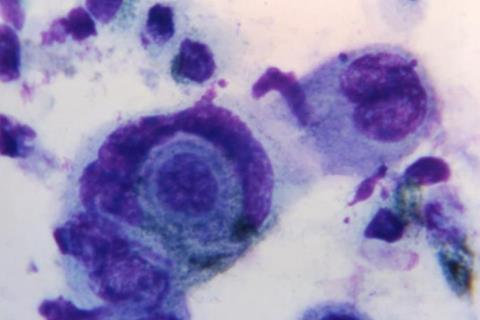The effectiveness of live zoster (shingles) vaccine is highest in the first year after vaccination and then wanes substantially. But it continues to provide some protection against shingles and its complications ten years after vaccination, even in patients with a weakened immune system, finds a study published by The BMJ.

Vaccine effectiveness is a measure of how well vaccines work to protect communities in the real world.
Herpes zoster, commonly known as shingles, is a painful rash caused by reactivation of the chickenpox virus. It’s much more common among people aged 60 and older and those with a weakened immune system, and can lead to disabling complications.
Live zoster vaccine
Live zoster vaccine was the first vaccine against shingles and over 50 million people have received it worldwide. It is not currently recommended for people with a weakened immune system and is no longer used in the US but use has continued elsewhere, including the UK and Australia. However, estimates of its long term effectiveness using real world data are lacking.
To address this, researchers used data from a large US healthcare provider (Kaiser Permanente Northern California) to determine the long term effectiveness of live zoster vaccine against herpes zoster infection, admission to hospital with herpes zoster, postherpetic neuralgia (lasting pain in the area of the rash) and herpes zoster ophthalmicus (rash in or around the eye).
Their findings are based on data for just over 1.5 million adults aged 50 and older who were eligible for live zoster vaccine. Of these, 507,444 (34%) were vaccinated during the study period, from 1 January 2007 to 31 December 2018.
Among 75,135 herpes zoster cases, 4,982 (7%) developed postherpetic neuralgia, 4,439 (6%) had herpes zoster ophthalmicus, and 556 (0.7%) were admitted to hospital for herpes zoster.
Drop-off after first year
For each outcome, vaccine effectiveness was highest in the first year after vaccination and decreased substantially over time.
First year vaccine effectiveness was 67% against herpes zoster infection, 83% against postherpetic neuralgia, 71% against herpes zoster ophthalmicus, and 90% against admission to hospital for herpes zoster.
Against herpes zoster, vaccine effectiveness waned to 50% in the second year, then decreased to 27% in the eighth year, and then to 15% after 10 years. Vaccine effectiveness for herpes zoster ophthalmicus was similar.
Against postherpetic neuralgia and admission to hospital, vaccine effectiveness started higher and also waned, but continued to confer substantial protection for several years (41% after 10 years for postherpetic neuralgia and 53% from 5-8 years for admission to hospital).
Vaccine effectiveness was generally similar across subgroups defined by age, sex, race or ethnicity, or immunocompromise status at vaccination.
Observational findings
These are observational findings and the authors point to several challenges including incomplete ascertainment of shingles and immunocompromised status of patients over time. The findings may also not apply to other settings because of differences in diagnostic practices or access to care.
However, this was a well designed study based on high quality health data that used innovative methods to examine the real world duration of vaccine protection, and the findings are generally consistent with those from randomised trials and other observational studies.
This timely new research will help to inform improvements to shingles vaccination programmes, providing new and valuable information on the need for and timing of follow-up or booster doses, say researchers in a linked editorial.
It also adds to evidence that live zoster vaccine is effective against herpes zoster among immunocompromised adults.
“Further research is also needed to evaluate the trajectory of vaccine effectiveness against herpes zoster and severe outcomes over time in people with chronic diseases such as those of the kidney, heart, and autoimmune system,” they conclude.







No comments yet